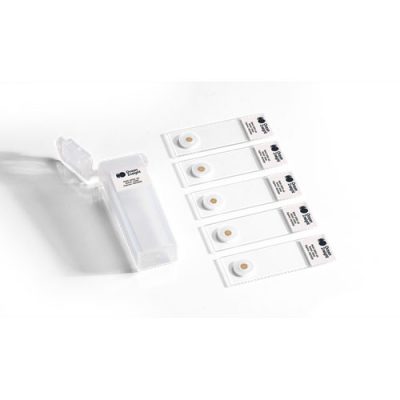.
SERS Substrates
Surface-enhanced Raman spectroscopy (SERS) substrates let you make fast, repeatable measurements for the identification and quantification of SERS-active analytes. Typical applications include trace level detection of narcotics, pesticides and taggants. Here are some key applications:
- Detection of narcotics. Fast identification of drugs in the field is a real boon for those combating drug-related crime. Often only small residues of a sample can be collected from a crime scene. SERS also opens up a potential route for fast roadside drug screening of drivers using saliva samples.
- Food safety. Certain additives such as melamine found in milk powder can be extremely harmful even at very low concentrations. Using SERS, we can qualify and quantify the level of dangerous trace elements in our food supply chain.
- Anti-counterfeit tagging. High value products that are subject to duties and taxes — petrol is one example — are often the target of piracy and fraud. By adding a small amount of a SERS-active taggant to the unadulterated product, detecting the taggant becomes an instant indicator of authenticity.


SERS Substrates
Features
- High sensitivity
- Great stability
- Reproducibility
- Customized form factors
- Easy to use
specifications
Subject to change depending on model type
Engineering: |
|
|---|---|
| Excitation Wavelengths | 532 nm, 785 nm |
| Sensitivity | ppm to ppb level sensitivity for wide range of analytes |
| SERS Active Chemistry | Gold (Au) Nanoparticles, Silver (Ag) Nanoparticles |
| Laser Power | ≤20 mW |
| Reusable | No |
| SERS Active Area | 5.5 mm diameter circle |
| Slide Dimensions | 25.4 x 76.2 x 1 mm |
| Slide Material Specification | Borosilicate Glass |
| Storage Lifetime | 1 month, 1.5 months |
| Volume Of Analyte | 15 µL |
Manufacturers
show DATA — DO NOT CHANGE ID–
Industries
show DATA — DO NOT CHANGE ID–
Methods
show DATA — DO NOT CHANGE ID–



